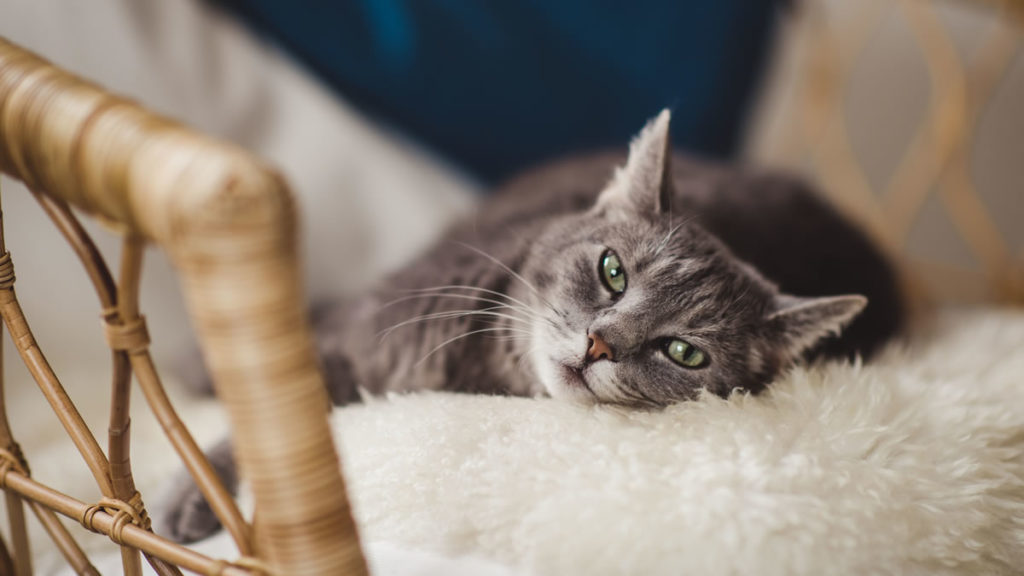Pampered indoor cats can live over 15 years and we know you want to make every day count for them. While “cat years” are difficult to calculate, cats over 15 are about the equivalent of 80 year olds for a human. Once they cross the threshold into their 20s, they might as well be 100. Caring for your senior cat requires a lot of patience as they may develop health problems, litterbox issues, and even dementia. In this post, we want to talk about the natural cat behavior of jumping. Some older cats may slow down or have trouble jumping for play or to reach their favorite sleeping spot. Here are a few things you need to know.
Arthritis
One big concern for older cats is arthritis. It can present as stiffness in the joints, lethargy, and an inability to climb, run, or jump like they used to. If you’re concerned about your cat’s inactivity, talk to your vet about an exercise program that can include short and gentle play sessions. They may prescribe a medication to help with aching joints. You can also assist your cat by grooming hard to reach places and massaging them gently while they’re resting.
Vision Issues
Problems with vision may also contribute to your cat’s decreased desire to jump. Just like humans, cataracts, glaucoma, or retinal detachment can cause degrees of low vision or even complete blindness. Play triggers hunting instincts and low vision can affect their ability or interest in jumping. They may have difficulty reaching platforms, furniture, or cat trees around the house as they are no longer able to focus on the target. Be patient with them as they learn to navigate without full vision.
Change in Routine
Cat’s are creatures of habit. They have a routine they follow that may include their desire to be up high on a window perch or the top of a cat tree. High spaces make them feel safe. If you move these items, your cat may express their concern with the new location and stop jumping. Especially for older cats, who can experience cognitive decline similar to dementia, maintaining their routine and layout of the home will be critical.
Accessible Trees and Platforms
If you’re noticing that your cat is no longer jumping up to their favorite sleeping spot, it’s time to make these spaces even more accessible. They may even start to have trouble jumping on the bed. Using stairs designed for pets or setting a stool where they have a shorter jump can help them stay active and enjoy their high spaces. Experts also recommend installing a climbing wall with platforms at various levels to help them access sleeping spots at the top.
Give your cats the best care as they age. Pay attention to their body language, have them checked every six months by your vet, and provide them comfortable spots to rest their old bones.

